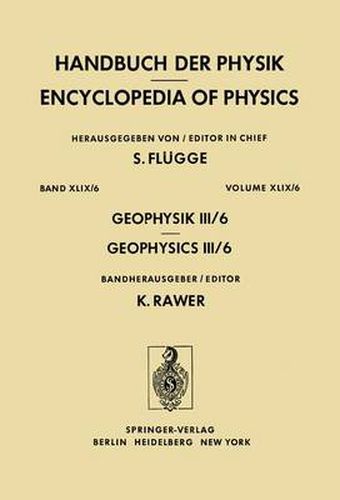Readings Newsletter
Become a Readings Member to make your shopping experience even easier.
Sign in or sign up for free!
You’re not far away from qualifying for FREE standard shipping within Australia
You’ve qualified for FREE standard shipping within Australia
The cart is loading…






This title is printed to order. This book may have been self-published. If so, we cannot guarantee the quality of the content. In the main most books will have gone through the editing process however some may not. We therefore suggest that you be aware of this before ordering this book. If in doubt check either the author or publisher’s details as we are unable to accept any returns unless they are faulty. Please contact us if you have any questions.
83 input to the ions is balanced by a cooling to atomic oxygen, the major neutral constituent, and measurements of the difference between ion and neutral tem perature permit the determination of atomic oxygen concentrations. Using this approach, ALCA YDE et al. 6 have shown from data taken above Saint Santin, France, that the atomic oxygen concentration at 200 km is slightly larger in winter than summer. () The molecular concentrations at heights near 200 km can also be derived from a determination of the ratio of the molecular-ion concentration to elec tron concentration, p (Cox and EVANS 7). It can be shown from the steady state form of the continuity equation for 0+ ions that (20.2) where Q(O+) represents the photoionization coefficient of oxygen atoms, and k and k19 represent the rate coefficients of reactions between 0+ ions and 1S molecular nitrogen Illld oxygen (reactions (12.18) and (12.19)). Then the ratio of atomic oxygen to weighted molecular sum is given by: (l-p)Ne [OJ (20.3) Q(O+) , [kMJ where Ne represents the electron concentration.
$9.00 standard shipping within Australia
FREE standard shipping within Australia for orders over $100.00
Express & International shipping calculated at checkout
This title is printed to order. This book may have been self-published. If so, we cannot guarantee the quality of the content. In the main most books will have gone through the editing process however some may not. We therefore suggest that you be aware of this before ordering this book. If in doubt check either the author or publisher’s details as we are unable to accept any returns unless they are faulty. Please contact us if you have any questions.
83 input to the ions is balanced by a cooling to atomic oxygen, the major neutral constituent, and measurements of the difference between ion and neutral tem perature permit the determination of atomic oxygen concentrations. Using this approach, ALCA YDE et al. 6 have shown from data taken above Saint Santin, France, that the atomic oxygen concentration at 200 km is slightly larger in winter than summer. () The molecular concentrations at heights near 200 km can also be derived from a determination of the ratio of the molecular-ion concentration to elec tron concentration, p (Cox and EVANS 7). It can be shown from the steady state form of the continuity equation for 0+ ions that (20.2) where Q(O+) represents the photoionization coefficient of oxygen atoms, and k and k19 represent the rate coefficients of reactions between 0+ ions and 1S molecular nitrogen Illld oxygen (reactions (12.18) and (12.19)). Then the ratio of atomic oxygen to weighted molecular sum is given by: (l-p)Ne [OJ (20.3) Q(O+) , [kMJ where Ne represents the electron concentration.